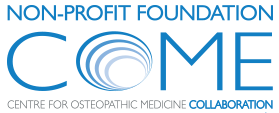Occipitoatlantal decompression and noninvasive vagus nerve stimulation slow conduction velocity through the atrioventricular node in healthy participants
Management of atrial fibrillation includes either rhythm control that aims at establishing a sinus rhythm or rate control that aims at lowering the ventricular rate, usually with atrioventricular nodal blocking agents. Another potential strategy for ventricular rate control is to induce a negative dromotropic effect by augmenting cardiac vagal activity, which might be possible through noninvasive and nonpharmacologic techniques. Thus, the hypothesis of this study was that occipitoatlantal decompression (OA-D) and transcutaneous auricular vagus nerve stimulation (taVNS) not only increase cardiac parasympathetic tone as assessed by heart rate variability (HRV), but also slow atrioventricular conduction, assessed by the PQ-interval of the electrocardiogram (EKG) in generally healthy study participants without atrial fibrillation. The objectives of this study ware to test whether OA-D and/or transcutaneous taVNS, which have been demonstrated to increase cardiac parasympathetic nervous system activity, would also elicit a negative dromotropic effect and prolong atrioventricular conduction … MORE







